007,
I chat with Quentin Tarantino about his glorious Hateful Eight & he also tells us about his version of James Bond's Casino Royale
 I had hoped to end last year with what I would consider a proverbial bang discussing a my cinematic highlight of 2015, instead I'm kicking off 2016 with that bang of a standard that will hopefully continue throughout the year.
I had hoped to end last year with what I would consider a proverbial bang discussing a my cinematic highlight of 2015, instead I'm kicking off 2016 with that bang of a standard that will hopefully continue throughout the year.
There are many reasons as to why it was my cinematic event of the year if you read The Establishing Shot you'll probably be aware that I am all about the immersive experience and it's unlikely that I'll have as great viewing of a film for a very long time, if ever.
For better or worse I often struggle to appropriately articulate some of what I consider highlight or milestone experiences - words don't fail me rather I feel that these experiences are somewhat diminished when curating them for a broader audience. I have been fortunate to enjoy a number of extremely exceptional experiences that I have kept to/for myself as I have felt that in the end - they mean more to me personally than they would as just another blog post on the web. The irony being that was one of the reasons I started The Establishing Shot in the first place (
This is one such experience...
 |
| The Hateful Eight Poster (ZOOM) |
CHAPTER ONE: THE RETURN OF THE BASTARD
Towards the end of last year I was extraordinarily fortunate along with a handful of others to see Quentin Tarantino's The Hateful Eight as it was meant to be seen in all it's gloriousness. That staggering experience was a highlight of 2015 for me and further turned into a milestone memory when I got to chat with Quentin Tarantino about the making of The Hateful Eight.
In a year that only saw four films in my Top 10 saying that I absolutely loved Quentin Tarantino's The Hateful Eight is surely something. Not only was The Hateful Eight one of my favourite films of the year but and not to harp on about it - it was a real and rare privilege to be able to watch it as Quentin Tarantino had originally intended.
 |
| The Hateful Eight Michael Madsen is Joe Gage aka Cow Puncher (ZOOM) |
A bastard's work is never done.”
- Joe Gage AKA The Cow Puncher, Michael Madsen
I went into the screening knowing fairly little about The Hateful Eight I knew that it was shot in glorious 70mm Ultra Panavision 70, Ennio Morricone would be scoring The Hateful Eight, there was a wildly popular script read through, I knew the screenplay was leaked, that Tarantino regulars; Samuel L. Jackson, Kurt Russell, Tim Roth, Michael Madsen and Zoë Bell would be joined by Jennifer Jason Leigh, Walton Goggins and Bruce Dern. Oh yes, Lee Horsley or as some might know him Mat Houston would be returning after working on Django Unchained.
And apart from hap-hazardously checking out The Hateful Teaser trailer the door for my expectations was fairly wide open. I believe that is the best way to appreciate The Hateful Eight go in with as little knowledge or expectation as possible in fact the film hinges on the audience not knowing much – if you haven't seen The Hateful Eight and plan on doing so – stop reading now and go get tickets.
From the trailer it seemed that Kurt Russell's John Ruth was taking the lead role as a sharp, no nonsense archetypal Western hero along the lines of his iconic role as Wyatt Earp from Tombstone or more recently Sheriff Hunt from Bone Tomahawk...
Mr. Fabian (Billy Zane):
My dear, you've set your gaze
upon the quintessential frontier type.
Note the lean silhouette... eyes closed
by the sun, though sharp as a hawk.
He's got the look of both predator and prey.
- Excerpt from the Tombstone screenplay by Kevin Jarre
My dear, you've set your gaze
upon the quintessential frontier type.
Note the lean silhouette... eyes closed
by the sun, though sharp as a hawk.
He's got the look of both predator and prey.
- Excerpt from the Tombstone screenplay by Kevin Jarre
... a law man with an ace up his sleeve (well he certainly is Tarantino's ace up the sleeve) who becomes embroiled in some sort of perilous adventure on the western frontier whilst transporting prisoner Daisy Domergue played by Jennifer Jason Leigh. Or was he? Or she for that matter? After seeing the trailer part of me wanted to see a straight up Western (I think we are ready for one), Spaghetti or otherwise as seen through Tarantino's unique vision and I had an inkling that there was a possibility that like the Magnificent Seven this may be a team up of the dark kind.
The one thing I was certain of was that I hoping that The Hateful Eight was different from Django and Inglourious, a little more serious with less of the comedy perhaps - more about that further down.
But that's the thing about Tarantino you never really know what to expect, other than you really don't know what to expect. Full kudos for the marketing of The Hateful Eight which gives very little away – the way it should be.
On the morning of The Hateful Eight screening I could barely contain myself any longer as I headed into Central London. It was happening Quentin Tarantino's eighth film was here.
I arrived at the Leicester Square Odeon early and after a grabbing a coffee I managed to secure one of my favourite seats, every cinema has a sweet spot where sound and audio converge for an optimal viewing experience, ensconced in mine I read this as a good omen for the day.
One of the emails I received gave a running time of 187 Minutes (3 hours 7 Minutes). This meant there was a good chance I was about to see Quentin Tarantino's Roadshow Version of The Hateful Eight. That is - the full 70mm celluloid film version, the regular version of The Hateful Eight won't be projected at it's full frame size, will probably be digitally projected and has a run time of 167 mins (2 hours 47 minutes). As it turns out I later discovered that the Odeon Leicester Square was the only cinema in the UK that would be presenting The Hateful Eight in Ultra Panavision 70mm, this may hopefully change.
In case you aren't sure what the Roadshow Version of The Hateful Eight is - well in a similar fashion to when Quentin Tarantino teamed up with Robert Rodriguez to recapture some of the earlier magic of film with their Grindhouse tribute combining their Deathproof & Planet Terror films into a Grindhouse Double Feature release.
With The Hateful Eight Special Roadshow Engagement Quentin Tarantino set out to recapture some of the magic of film and cinema's glory days, back when going to the cinema was an event. Is he successful? I believe so I went to see The Hateful Eight again on its release - partially as this may very well be the last time I experience a modern Ultra Panavision 70mm film feature presentation in a cinema.
... This plants a flag in the sand, a flag of film and I think when you go see it, and the fact I'm using this almost 60s format i.e. the intermission, and the overture it makes it an event, it makes it a special reason to leave the house and go and do this.”- Quentin Tarantino
In discussion with other film lovers someone through out that this all seems to be fairly self indulgent. Quite the contrary The Hateful Eight Roadshow Presentation is clearly the creation of someone who loves film and wants to share and keep the spirit of cinema and film alive. I think it would have been far easier for Tarantino to play it safe and not go through all the effort of taking a huge risk and stepping outside his comfort zone shooting with heavy machinery. Further below there is more detail on this.
Steven Galloway: What is the biggest challenge facing film today?
Quentin Tarantino: I think there are philosophical problems with film today. But what exactly do you mean?
Steven Galloway: What do you mean philosophical problems?
Quentin Tarantino: I guess where I'm coming from to some degree or other is this - I don’t know if we’re giving people enough reason to leave their house, and go to the movies. Now I’m not trying to be a broken record, but I do think the digital production, the digital shooting, and the digital projection has a whole lot to do with that, because well - we’re just watching a DVD I can watch that at home.
Frankly to tell you the truth, a lot of films that 10 years ago I would have actually went out to the theatres and saw to watch. Now I can wait for them to get to the cable channels... and feel no loss watching them 6 or 7 months later and I can perfectly enjoy them.
- Excerpt from The Hollywood Reporter 2016 Director Roundtable
Quentin Tarantino: I think there are philosophical problems with film today. But what exactly do you mean?
Steven Galloway: What do you mean philosophical problems?
Quentin Tarantino: I guess where I'm coming from to some degree or other is this - I don’t know if we’re giving people enough reason to leave their house, and go to the movies. Now I’m not trying to be a broken record, but I do think the digital production, the digital shooting, and the digital projection has a whole lot to do with that, because well - we’re just watching a DVD I can watch that at home.
Frankly to tell you the truth, a lot of films that 10 years ago I would have actually went out to the theatres and saw to watch. Now I can wait for them to get to the cable channels... and feel no loss watching them 6 or 7 months later and I can perfectly enjoy them.
- Excerpt from The Hollywood Reporter 2016 Director Roundtable
Here is a video of Samuel L. Jackson explaining some of the finer points of what we have lost with our modern cinema experiences.
Video: THE HATEFUL EIGHT - 70mm Roadshow Featurette - The Weinstein Company
From The Hateful Eight Program:
Roadshow Release
The exclusive 70mm Roadshow engagement of The Hateful Eight pays homage to and recreates the grand film exhibition style popularized 1950s and ‘60s and that brought audiences to theaters with the promise of a special event. Taking place in the nation’s largest cities and grandest theaters, Roadshows presented a longer version of the film than would be shown in the films subsequent wider release, included a musical overture to start the show, an intermission between acts and a souvenir program.
Roadshows were the gold standard for exhibiting pictures like LAWRENCE OF ARABIA, GONE WITH THE WIND, CLEOPATRA, BATTLE OF THE BULGE, THE TEN COMMANDMENTS and BEN HUR.
This Ultra Panavision 70mm Roadshow presentation of The Hateful Eight is an experience that hasn’t been had in over fifty years.
The exclusive 70mm Roadshow engagement of The Hateful Eight pays homage to and recreates the grand film exhibition style popularized 1950s and ‘60s and that brought audiences to theaters with the promise of a special event. Taking place in the nation’s largest cities and grandest theaters, Roadshows presented a longer version of the film than would be shown in the films subsequent wider release, included a musical overture to start the show, an intermission between acts and a souvenir program.
Roadshows were the gold standard for exhibiting pictures like LAWRENCE OF ARABIA, GONE WITH THE WIND, CLEOPATRA, BATTLE OF THE BULGE, THE TEN COMMANDMENTS and BEN HUR.
This Ultra Panavision 70mm Roadshow presentation of The Hateful Eight is an experience that hasn’t been had in over fifty years.
As it got closer to start time it became apparent that the entire audience would consist of just us, maybe, I don't know 20 people - sitting in the upper Circle area of the cavernous 1,679 seat Odeon Leicester Square.
If you have ever been to the Odeon Leicester Square you will know how huge the cinema is and what a pleasure it was to have the entire cinema to our selves to drink in Tarantino's latest film. Not only is the Leicester Square theatre Odeon's flagship cinema but it is one of the world's premier cinemas with a state of the art audio and visual system. And this Odeon holds a particular significance to me with regards to this screening. It was six years ago we cracked invites to the the premiere of Quentin Tarantino's Inglourious Basterds – good times.
The lights dim and the picture show begins....
THE WEINSTEIN COMPANY
Presents
The 8th Film by
QUENTIN TARANTINO
THE HATEFUL EIGHT
© Copyright MMXV Visiona Romantica, Inc.
All rights reserved.
Presents
The 8th Film by
QUENTIN TARANTINO
THE HATEFUL EIGHT
© Copyright MMXV Visiona Romantica, Inc.
All rights reserved.
The Establishing Shot: THE HATEFUL EIGHT UK TRAILER - 8 JANUARY 2016
Six or eight or twelve years after the Civil War, a stagecoach hurtles through the wintry Wyoming landscape. The passengers, bounty hunter John Ruth (Kurt Russell) and his fugitive Daisy Domergue (Jennifer Jason Leigh), race towards the town of Red Rock where Ruth, known in these parts as “The Hangman,” will bring Domergue to justice.
Along the road, they encounter two strangers: Major Marquis Warren (Samuel L. Jackson), a black former union soldier turned infamous bounty hunter, and Chris Mannix (Walton Goggins), a southern renegade who claims to be the town’s new Sheriff. Losing their lead on the blizzard, Ruth, Domergue, Warren and Mannix seek refuge at Minnie's Haberdashery, a stagecoach stopover on a mountain pass. When they arrive at Minnie’s, they are greeted not by the proprietor but by four unfamiliar faces. Bob (Demian Bichir), who’s taking care of Minnie’s while she’s visiting her mother, is holed up with Oswaldo Mobray (Tim Roth), the hangman of Red Rock, cow-puncher Joe Gage (Michael Madsen), and Confederate General Sanford Smithers (Bruce Dern). As the storm overtakes the mountainside stopover, our eight travelers come to learn they may not make it to Red Rock after all…
Along the road, they encounter two strangers: Major Marquis Warren (Samuel L. Jackson), a black former union soldier turned infamous bounty hunter, and Chris Mannix (Walton Goggins), a southern renegade who claims to be the town’s new Sheriff. Losing their lead on the blizzard, Ruth, Domergue, Warren and Mannix seek refuge at Minnie's Haberdashery, a stagecoach stopover on a mountain pass. When they arrive at Minnie’s, they are greeted not by the proprietor but by four unfamiliar faces. Bob (Demian Bichir), who’s taking care of Minnie’s while she’s visiting her mother, is holed up with Oswaldo Mobray (Tim Roth), the hangman of Red Rock, cow-puncher Joe Gage (Michael Madsen), and Confederate General Sanford Smithers (Bruce Dern). As the storm overtakes the mountainside stopover, our eight travelers come to learn they may not make it to Red Rock after all…
As I had hoped we were indeed privy to the Roadshow Presentation and by all accounts it was the cinematic event of the year for me, closely followed by Secret Cinema's The Empire Strikes Back event, but that is a story for another time.
To start we were treated to an old school Overture for about 10 mins basically a still image of a stagecoach at the bottom of a full red screen whilst Ennio Morricone's Overture (Track 2 of The Hateful Eight Soundtrack)
There was an intermission between the first and second act to give us a refreshment break as well as a chance to discuss what we had just seen and there was definitely discussion about events that closed the first act.
Sadly we did not receive a program. I suspect this is because this secret screening was so far in advance that they were not ready at the time - but as I went along to the Odeon Leicester Square to watch the big, big screen version of The Hateful Eight again I managed to pick one up and this keepsake is worth the price of admission alone. I have to say the overall experience of watching a regular screening of The Hateful Eight, although crowded felt even more special.
CHAPTER TWO: THERE'S A STORM COMING AKA WHO RELEASED THE HOUNDS?
From the bleak Establishing Shots of the snowy Wyoming badland vistas we are told that the world we are about to enter is brutal, the kind of place Christ has turned his back on - the kind of forsaken place the fatherless are cast out to, the place where 6 horse hope comes to die - much like purgatory before the guilty receive their final judgement.
 |
| The Hateful Eight Ennio Morricone Soundtrack (ZOOM) |
And Ennio Morricone's opening theme L’Ultima Diligenza di Red Rock – Versione Integrale affirms that the stage is set and we are in for a rough ride by adding a sense of dread and foreboding into the mix. We soon discover that that the people who inhabit this world are just as brutal.
 |
| The Hateful Eight Demián Bichir Bob aka aka The Mexican (ZOOM) |
Everybody's got a mother.”
- Bob, aka The Mexican, Demián Bichir
It's Tarantino's return to a dog eat dog world as The Hateful Eight converge on Minnie's Haberdashery which for most of the film is the main location of the film. In this respect Tarantino levels up as I believe this is the first time he pays homage to his own work in particular Reservoir Dogs. But as much as Tarantino touches on similar tropes as seen in Reservoir Dogs the overriding sense is that this is a man confident enough in his abilities to create something fresh, completely divorced from his previous films, shedding the indulgences and frills of say Inglourious and Django as he brings it right back to basics to tell the story of a group of hardened individuals trapped in a cabin.
Outside a fractured country during the Reconstruction Era with the proverbial storm having arrived and battering the cabin - inside a microcosm that starts boiling over as the group try, well, not really try, to peel back the layers on each other and reveal any hidden depths and motivations, in fact if anything it seems none of them can stand to be around each other – but Tarantino's colourful characters have a severity about them that can only lead to each of them getting under each others skin.
And I absolutely loved it.
 |
| The Hateful Eight Walton Goggins Chris Mannix aka The Sheriff (ZOOM) |
What my daddy fought for was dignity in defeat and against the unconditional surrender.”
- Chris Mannix, aka The Sheriff, Walton Goggins
As much I was hoping that we got to see a straight up western with astounding Establishing Shots, gunfights, horse chases, hero and villain both existentially and physically going head to head, grand Ultra Panavision 70mm shots of valleys ala John Ford all set to the Maestro's music - Tarantino again completely plays against expectations eschews not only the clichés but the norms of the genre and continues carving out his own unique path envisioning a bold tale of astringent personalities in a tough time period on an austere frontier.
It is Western, an original Western, well, as original as a Tarantino film can be that is influenced by multiple sources interwoven to tell an original tale of the likes of which which we haven't seen in a long time and in pulling it all together successfully Tarantino adds a solid and powerful film to his resume - that will only increase in viewing pleasure over time.
CHAPTER THREE: BETTER THE DEVIL YOU KNOW
As much as the spectacle of a 70mm presentation with a score from Ennio Morricone ignite the senses, much of the magic of the film comes from the performances behind key characters particularly Samuel L. Jackson's Major Marquis Warren and Jennifer Jason Leigh's Daisy Domergue. Even now many of the stand out moments of the film for me where brought on by Jennifer Jason Leigh's insanely brilliant and terrifying performance.
 |
| The Hateful Eight Jennifer Jason Leigh Daisy Domergue aka The Prisoner (ZOOM) |
You're gonna die on this mountain and I'm gonna laugh when you do!”
- Daisy Domergue, aka The Prisoner, Jennifer Jason Leigh
Over the last decade Samuel L. Jackson has taken on many, many, many roles, making him, the hardest working actor in Hollywood and for a period, the highest-grossing actor of all time, but in doing so he has been a bit over exposed for me, I go into the cinema knowing what to expect - but his role and delivery in The Hateful Eight reminded me of just how great an actor he is. There are few performers that can swing from maniacal menace to making you chuckle in the same scene as he shifts from cold blooded gun slinger to Western detective. He is a bona fide talent that's time has come. And with The Hateful Eight firmly plants himself into the Western mythos as one bad ass gunman ranking alongside the greats.
It is a shame that the Academy did not acknowledge his work but perhaps it's understandable given the nature of his character and how controversial some may feel his role in The Hateful Eight is at a time when racial tensions are inflamed. In this respect I feel that the more subtle elements of Tarantino's use of karmic revenge may be lost. Not to take anything away from the rest of the cast but both Jackson and Leigh put in outstanding performances lifting their characters to the pantheon of Tarantino greats and surely cult favourites.
The Hateful Eight may have started out as a sequel to Django Unchained called Django in White Hell but decided that Django was wrong for it because he didn't want a moral centre which was good for me because from what I divine there are two cinematic flavours to Tarantino's oeuvre, the second – are of the persuasion that he has been making lately your; Django Unchained, Inglourious Basterds, Kill Bills, Pulp Fiction, and then there is early Tarantino, or as I like to call it OT that is - Original Tarantino the guy who makes; Reservoir Dogs, to some degree Pulp Fiction, Jackie Brown, Death Proof and now the eighth film from Quentin Tarantino The Hateful Eight.
I love films of both flavours, some less so but certainly enjoy elements from across the board - and, whilst many thematic elements from across his body of work converge and exemplify a Grindhouse ethos with extreme characters compellingly entwined in intense situations all being held together by punchy dialogue – there are two distinct types of films. The former group is defined from me by being; of a grander scale, more colourful, louder, slicker, comedic, character driven and more crowd pleasing whilst Original Tarantino makes pieces that are; smaller, grittier, proximate, uses fewer locations, more menacing, more actor/performance driven hence more emotive, more satirical than comedic and more intimate - well maybe not intimate but the relationship dynamics between characters are certainly deeper, less broad making their bonds tighter or cutting as is the case with The Hateful Eight.
 |
| The Hateful Eight Tim Roth Oslwaldo Mobray aka The Little Man (ZOOM) |
Justice delivered without dispassion is always in danger of not being justice.”
- Oslwaldo Mobray AKA The Little Man, Tim Roth
Most notably and this is the bit that I really appreciated about The Hateful Eight is that the script and dialogue isn't just bold, compelling, surprising, clever and witty in all the ways that we hope a Tarantino film is - this is the film that explicitly touches on morality, with some focus on revenge & retribution (an alternative title could have been The Wages of Revenge) and importantly trust, hypocrisy & duplicity - within the confines of the noir or Grindhouse genres - sure these are all issues that Tarantino has thread into his previous films to work as foundational devices to his stories. But previously they have served to overtly define and build his larger than life characters and largely we the audience have been in on the deception.
In fact Tarantino's films set themselves apart by the honesty of his antagonists – as noble or malevolent as they are, there is always a streak of honesty about them and they present themselves as they are - with little regard for pretence. On the other hand many of Tarantino's heroes are duplicitous in presenting themselves, such as (off the top of my head); Tim Roth's Freddie Newandyke, Pam Grier's Jackie Brown working with the ATF against Ordell, the Inglourious Basterds posing as German and Italian officers on their mission and most recently Christoph Waltz's Dr. King Schultz & Jamie Foxx's Django posing as potential Mandingo fight owners. This is one of the many things I have always admired about Tarantino's films he can create compelling villains, that maintain their intrigue without the need to trick the audience with their twist reveal.
 |
| The Hateful Eight Bruce Dern Confederate General Sandy Smithers aka The Confederate (ZOOM) |
According to the Yankees, it's a free country.”
- Confederate General Sandy Smithers AKA The Confederate – Bruce Dern
With The Hateful Eight Tarantino turns this on its head and key to the suspense and premise of the film is that we are never really sure of who anyone is. The entire film until near the climax I was guessing and second guessing as to who the characters on screen actually were and never felt entirely convinced I had a handle on who the villain could be. Of course with a title like The Hateful Eight there is an allusion that indeed all eight characters could in fact be the villain and just as bad as one another.
But none of that really matters as I was too busy enjoying the film to think about the bigger landscape on my first viewing.
Thinking about it afterwards it dawned on me that a large part of the rationale behind my desires for a straight up western is that – Western tropes are so well worn and that we haven't really seen anything fresh or game changing in such a long time that I only view Westerns through that small prism. When something new comes along there is a bit of cognitive dissonance for me before come around to fully appreciating what was happening on screen. This train of thought reminded me I need to re-watch James Mangold's 3:10 to Yuma again.
I want us to work out a signal system of communication. Like when I elbow you real hard in the face, that means shut up.”
- John Ruth, aka The Hangman, Kurt Russell
CHAPTER FOUR: THE PLAY'S THE THING AKA FINISH IMITATING THESE DOGS [Working Title - THIS THING DOESN'T WANT TO SHOW ITSELF, IT WANTS TO HIDE INSIDE AN IMITATION]
Quentin Tarantino has been forthcoming about his main influences for The Hateful Eight in the Directors Guild of America Q&A session between Quentin Tarantino and Christopher Nolan
Video: The Hateful Eight DGA Q&A with Quentin Tarantino and Christopher Nolan
I'm sure, as Nolan alludes to, there are many but these are the influences Tarantino attributes;
… particularly, The Thing is probably the one movie that is the most influential on this movie per say. In a lot of ways I was influenced mostly, more than any movie and there aren't that many movie touchstones in this one. The Thing and Reservoir Dogs are the absolute biggest, and actually Reservoir Dogs was very much influenced by The Thing, so that goes a long way.
The biggest influence I was holding on, during the writing was, I was and always have been a fan, especially in the last 6-7 years I've watched a lot of them. Of the America Western TV shows from the 60s. Like The Virginian (Kurt Russell actually worked on a couple of episodes as well as The High Chaparral which QT references in other interviews), Bonanza, Gunsmoke (again Kurt Russell was in an episode), one of the things that was interesting about those shows, in particular the ones I liked to watch are usually ones that have guest stars that I'm a big fan of. And so if you watch a Virginian episode where William Shatner is the guest star, or Robert Culp is the guest star. William Shatner is the star of the episode, it is about him, the story of that episode is about him and Doug McClure as Trampas (The Virginian) or Michael Landon as Little Joe. (Bonanza) are supporting characters, they are either the antagonist of that character, or they are helping that character out.
But the thing that was interesting about these guest stars, like Vic Morrow or James Coburn, Charles Bronson or any of these fellows. These guest stars would show up, the story would be about them, and there was always an unknown quality about them, we didn't know who they were, they weren't just the Blacksmith in the town, they were always entering the town.
And then in some point in the First Act: You would learn something about there past, they had an interesting, shady, controversial past of some kind. And you didn't know how true or untrue the story was that you heard. But you didn't really know about them. And usually it was a situation that the whole Second Act of the story were they an protagonist or an antagonist? Is Michael Landon going to end up being his friend and help him by the end or is Michael Landon going to end up killing him at the end because he is a bad guy?
That concept of a character became very, very interesting to me, and I thought about what if I could take eight of those characters? Trap them in a room during a three day blizzard, where if they try to leave it would be certain death. They have to deal with each other. They all have a back story – we can't trust a f&$#?@! thing they say and we can't trust anything they say they are, and we just have to figure it out as we watch the story.
Yet there is no Doug McClure, there is no James Arness, there is no Michael Landon, there is no moral centre, there is no hero you can gravitate towards, there is only these guest stars, that you have to deal with.
That was the epitasis going forward. However The Thing cannot be ignored. It is the only movie I showed the cast... ...but the thing about it was, there are so many things that are applicable to it – the set-up, the cold, the snow, Kurt Russell, Ennio Morricone, the paranoia going on, but truly, and I was trying to do this in Reservoir Dogs as well, the real correlation to The Thing isn't those elements, it was the way I felt watching The Thing the first time I saw it in a movie theatre.
My metaphoric way of breaking down my feelings because I was really connected to that movie. And I thought it was crazy suspenseful, in a weird way suspense leading to terror in a way suspense really gets to. I thought part of the reason for that was – no one could trust anybody else and the paranoia amongst the characters was so strong and it's trapped in that enclosure for so long that the paranoia just bounced off all the walls till it had nowhere to go but the fourth wall, out into the audience. And that was what I was trying to achieve with The Hateful Eight...
… I would say the three plays are a trifecta of Key Largo, The Petrified Forest and The Iceman Cometh to one degree or another but that theatrical hothouse quality was what I was going for.
Oddly enough though getting back to the jumping of point of these Western TV shows of the 60s – every series at least once a season a bunch of outlaws would take over the Ponderosa and hold everybody at bay, like they do in Key Largo or take over Shiloh Ranch on The Virginian, there is one Virginian in particular called The Invaders that's a particularly cool one. Where these bad guys take over the Shiloh Ranch and the bad guys are Darren McGavin and David Carradine.”
Just to pick up on the hothouse theatrical element - the influence of the stage on The Hateful Eight is pre-eminent - from the reading, through to the almost single location setting and Tarantino has expressed an interest in adapting The Hateful Eight to a full blown stage play at some point in the future - in this respect I would throw out that amongst the many suspected influences that the title may also be an allusion to Twelve Angry Men (they're basically good eggs) and the techniques director Sidney Lumet uses to build mood. Regarding the number 8, could the eight of The Hateful Eight are a combination of the type of bad guys from his previous seven films with The Hateful Eight being his eighth feature.
#Update I have now seen George Pollock's 1965 feature film Ten Little Indians. The film is one of the adaptations of Agatha Christie's highest selling mystery novels And Then There Were None. Christie's novel was originally entitled Ten Little N****** and the story concerned:
And Then There Were None
In the novel, a group of people are lured into coming to an island under different pretexts, e.g., offers of employment, to enjoy a late summer holiday, or to meet old friends. All have been complicit in the deaths of other human beings, but either escaped justice or committed an act that was not subject to legal sanction. The guests and two servants who are present are "charged" with their respective "crimes" by a gramophone recording after dinner the first night, and informed that they have been brought to the island to pay for their actions.
They are the only people on the island, and cannot escape due to the distance from the mainland and the inclement weather, and gradually all ten are killed in turn, each in a manner that seems to parallel the deaths in the nursery rhyme. Nobody else seems to be left alive on the island by the time of the apparent last death. A confession, in the form of a postscript to the novel, unveils how the killings took place and who was responsible. - Wiki
In the novel, a group of people are lured into coming to an island under different pretexts, e.g., offers of employment, to enjoy a late summer holiday, or to meet old friends. All have been complicit in the deaths of other human beings, but either escaped justice or committed an act that was not subject to legal sanction. The guests and two servants who are present are "charged" with their respective "crimes" by a gramophone recording after dinner the first night, and informed that they have been brought to the island to pay for their actions.
They are the only people on the island, and cannot escape due to the distance from the mainland and the inclement weather, and gradually all ten are killed in turn, each in a manner that seems to parallel the deaths in the nursery rhyme. Nobody else seems to be left alive on the island by the time of the apparent last death. A confession, in the form of a postscript to the novel, unveils how the killings took place and who was responsible. - Wiki
In Pollock's film rather than an island the setting is a snowy mountain much like Tarantino's Hateful Eight. It is very clear that both Pollock's film and Agatha Christie's book are clear influences on Tarantino's film.
Video: Ten Little Indians / Official Trailer (1965)
I would also contend that there may be more to the relationship between The Thing and its multiple coincidences with The Hateful Eight. On a metaphorical level it's almost as if The Hateful Eight is a clever delivery system for a allegorical tale - and The Hateful Eight is actually a spiritual remake of John Carpenter's The Thing and Tarantino is drawing parallels between a mysterious parasitic organism from another world that consumes its victims and replicates them as warped survival instinct driven ghost of their former selves. With Tarantino's version The Thing is not an extraterrestrial life form but rather something more local and cerebral, say a catalytic mixture of emotions, environment and life experiences that consumes the victim with hate and ultimately mutates them into a warped survival instinct driven ghost of their former selves. A neural bridge too far? Perhaps, but watching The Hateful Eight the second time with this in mind was a lot of fun.
Hell descends on the cabin!
 |
| The Hateful Eight Poster (ZOOM) |
It is however clear that Tarantino wished to explore a situation that lacked a moral compass to draw our sympathies or focus our your hopes on. How would we the audience react? Would our focus spin around like a compass that couldn't find North during an electric storm in Bermuda, would our focus bounce around the interior of the cabin? Would we root for the one we empathised with the most? Would we hope another character entered stage left? Or would we root for the devil we know?
It is a Western but it's almost as if it's a Western mystery made by a bloodier Alfred Hitchcock with nods to John Carpenter, the suspense starts early and really ratchets up in the second part of the films as things head further South. This is in no small part due to the music of The Hateful Eight.
CHAPTER FIVE: THE SOUND AND THE FURY
The pairing of Ennio Morricone and Quentin Tarantino on a Western, this being the first time a composer has taken on the entire score of a Quentin Tarantino film and it's Morricone's first Western in forty years should be aural gold and there is an unforgettable moment for me in The Hateful Eight that takes place early on, Ennio Morricone's Regan's Theme (Floating Sound) from Exorcist II: The Heretic draws us in as a stage coach makes its way through the snow and we see two horses full of power and grace moving in unison as they pull the stagecoach. For one brief moment I was taken back to the classic Westerns of the past and thought Tarantino has done it The Hateful Eight is going to be a defining western of this decade. I guess my expectations were hopelessly out of control I wanted the pairing of Tarantino and the Maestro to spawn an iconic and unique western sound like we got with Sergio Leone's films. I'm talking Il Buono, Il Cattivo, Il Brutto (The Good, the Bad and the Ugly) Main Title or Theme From A Fistful of Dollars - iconic. The kind of iconic that has these 50 year old tracks on regular rotation on my playlist and when they do play they evoke something beyond the film presented.
In the case of a Quentin Tarantino movie, I really tried to give The Hateful Eight a unique score, because he’s a unique director with his own signature style.- Excerpt from an interview with Ennio Morricone & Quentin Tarantino with Joe Utichi for Deadline AwardsLine
I wrote the music for a lot of Westerns, but even though I wrote several Western scores, I tried to give each director a unique kind of music. For The Hateful Eight, I wanted it to make something appropriate for the movie and not a Western score.”
Make no mistake - this is a tall order if it wasn't I wouldn't be talking about film music from almost 50 years ago that still resonates. Morricone's work on The Hateful Eight feels and sounds a lot more like a nod to Bernard Herrmann's moody violin infused work for Alfred Hitchcock than Morricone's earlier punchier guitar infused Western soundtracks. And by that I don't mean to take anything away from Ennio Morricone's wide and varied catalogue in which he has covered every genre of film at least twice.
It’s not exactly a Spaghetti Western score that Ennio made, nor did I expect it to be. He had made it clear that he wasn't really interested in doing Western scores any more, which is why I was so taken that he wanted to sit down and talk with me about The Hateful Eight. I knew in my heart it wouldn't be a Western score.- Excerpt from an interview with Ennio Morricone & Quentin Tarantino with Joe Utichi for Deadline AwardsLine
I knew he’d respond to the drama of the story and, frankly, he gave me a horror movie score, to some degrees a Giallo score, complete with a diabolical music box that comes in from time to time. It was perfect for the movie.
Only later did I discover the startling origin of much of Morricone's soundtrack for The Hateful Eight. In the video below Christopher Nolan discusses the making of The Hateful Eight and Ennio Morricone's soundtrack. The clip will start with the pertinent part of the chat but the whole video is worth a watch and reveals some great insights into the making of the film.
Video: The Hateful Eight DGA Q&A with Quentin Tarantino and Christopher Nolan
Here is the apropos bit as Quentin Tarantino retells the conversation between Ennio Morricone and how his unused work for John Carpenter's The Thing ended up being used for The Hateful Eight.
… 'here is what I can do, I can maybe write the theme for you, I'll write the theme' and I had already talked to him about the Carpenter theme, the Carpenter music for The Thing and then he told me a story:
'Well you know the thing was, he came and showed me the movie and whatever, then I wrote a whole orchestra score and I wrote a whole synthesizer score because I knew that was what was used to and I gave him everything and the only thing he used in the entire movie was the synthesizer main title.
So basically, if you stay away from the synthesizer main title, all that music that’s on the soundtrack album The Thing has never been used in a movie ever.
So he goes 'What I can do, is I’ll write the theme. I'll give you a mixed version of the theme. I'll give you a version of the theme that is just brass. I'll give you a version of the theme that is just strings and with the other Thing pieces of music, you have your original score that’s never been used in a movie before.’...”
Tarantino goes on to explain that in the end Morricone must have been inspired and came up with 35 minutes of new music, which was combined with the unused Thing pieces to create the original score for The Hateful Eight.
Like Hitchkock, Tarantino likes his MacGuffin devices the most famously the glowing contents of Marsellus' briefcase, in The Hateful Eight he uses his MacGuffin to remarkable effect. The Lincoln Letter carries our hopes and dreams with it one of the few hopeful lights in this otherwise dark world with astoundingly deeper significance as we learn more about it with our propensity to believe in the myth rather than the harsh reality. Somewhere Tarantino is laughing.
 |
| The Hateful Eight Samuel L. Jackson Major Marquis Warren The Bounty Hunter (ZOOM) |
Bringing guilty men in alive is a good way to get yourself dead.”
- Major Marquis Warren, aka The Bounty Hunter, Samuel L. Jackson
CHAPTER SIX: ROMANTIC VISION
Integral to The Hateful Eight experience is Tarantino's use of 70mm which may be the most interesting and historically important facet of The Hateful Eight experience.
I'm going to delve into a little detail about Ultra Panavision 70 and it's significance because almost every reference I've looked at throws out technical aspects rather than what it means for a regular person going to see a film.
The majority of The Hateful Eight takes place indoors, in a single open plan cabin. This, to me seemed like a missed opportunity - having this ultra wide format and not to show incredible landscapes and push the format.
But as I said before - the only thing to expect with Tarantino is the unexpected. Below are Tarantino's thoughts on shooting super widescreen in a cabin and it's solid, especially after a second viewing. That aside Hateful is not about that it is a study of characters in a room holding the audience captivated and the use of super widescreen is integral to that experience.
“Capturing this bleak Western landscape, capturing the snow, capturing the beauty of these locations would be perfect for 70mm,” Tarantino says, noting that the format also brings intensity to the film’s interiors. “I believe that these big formats offer more intimacy. You can be closer to the characters. It could bring you closer and invade the intimacy of the characters in its bigness. I don’t think that it is a format that is only meant for travelogues.”
McIntosh [producer Shannon McIntosh] agrees that the immersive widescreen experience enriches the mystery once the Eight converge inside of Minnie’s Haberdashery. “There is so much going on in the frame with these characters that every time you watch a shot you see something different. You pick up a nuance of the character, you pick up an expression of one of these -- as we call them, haters -- and it’s just magnificent. I can’t imagine shooting it in any other way.”
“You have eight characters, so in the room, you can fill the frame continually with all of your characters,” Richardson says. “An audience can monitor virtually every shot, where a character is. The width of this frame gives you a claustrophobic feel, since you can see all of the walls. It closes you in, and the experience of the acting is multiplied, in my opinion.”
The width of the projected image is only part of what makes Ultra Panavision 70 a preferred format. Film captures depth, color and light in ways that the digital image cannot: “Often times with the new digital world people say it’s so clear,” producer Shannon McIntosh notes. “We’re clear and in a way that is so beautiful because of this film. It is hard to imagine folks wanting to go back to look at a digital image after that. It’s spectacular.”
- Excerpt from The Hateful Eight production notes
McIntosh [producer Shannon McIntosh] agrees that the immersive widescreen experience enriches the mystery once the Eight converge inside of Minnie’s Haberdashery. “There is so much going on in the frame with these characters that every time you watch a shot you see something different. You pick up a nuance of the character, you pick up an expression of one of these -- as we call them, haters -- and it’s just magnificent. I can’t imagine shooting it in any other way.”
“You have eight characters, so in the room, you can fill the frame continually with all of your characters,” Richardson says. “An audience can monitor virtually every shot, where a character is. The width of this frame gives you a claustrophobic feel, since you can see all of the walls. It closes you in, and the experience of the acting is multiplied, in my opinion.”
The width of the projected image is only part of what makes Ultra Panavision 70 a preferred format. Film captures depth, color and light in ways that the digital image cannot: “Often times with the new digital world people say it’s so clear,” producer Shannon McIntosh notes. “We’re clear and in a way that is so beautiful because of this film. It is hard to imagine folks wanting to go back to look at a digital image after that. It’s spectacular.”
- Excerpt from The Hateful Eight production notes
Ultra Panavision 70 is a celluloid film stock, that is, an actual physical cellulose based plastic. With the digital revolution film stock has become somewhat of a rarity as films are now almost exclusively shot and captured on hard drives, they are edited on computers and projected from hard drives via a digital projector. It went by largely unnoticed by the mainstream but the demand for film has fallen so much that Kodak is now the only company that still makes film and until recently it looked like the door was going to close on that chapter.
No. 8: Tarantino, Spielberg, Nolan, Scorsese, Greengrass, J.J. Abrams, Paul Thomas Anderson all still shoot on film. There is a reason.”- Excerpt from Sam Mendes' John Schlesinger Britannia Award acceptance speech
Ever the gentleman Sam Mendes does not mention that his name should also be listed along with his contemporaries above. Mendes and Director of Photography Hoyte Van Hoytema shot the bulk of Spectre on 35mm film.
A while back a group of film-makers that included; Martin Scorsese, J.J. Abrams, Christopher Nolan, Quentin Tarantino and others urged studios to step in and come to some sort of arrangement with Kodak. Which eventually led to - an agreement between Kodak and the studios that meant that film would be kept alive (for now, at least) as Kodak would continue to make and supply six major studios (Disney, Fox, Paramount, Sony, NBC Universal and Warner Bros.) with film and is focussing on indie producers next.
Furthermore the success of J.J. Abrams' Star Wars: The Force Awakens shot on 35mm brought the beleaguered Kodak back from the brink and into profit.
Recent and upcoming films in that will be shot on film includes: Interstellar, Mission: Impossible - Rogue Nation, Star Wars: The Force Awakens (35mm & 65mm), Bridge Of Spies, The Big Short, Carol (shot on Super 16), Joy, Steve Jobs (16mm, 35mm & digital), Trainwreck, Jurassic World, Ant-Man, Cinderella, Entourage, Love And Mercy, Spectre, Black Mass, Son Of Saul, Batman v. Superman: Dawn of Justice, Suicide Squad, the Jason Bourne sequel, Hail Caesar!, The Magnificent Seven, Wonder Woman as well as the upcoming Star Wars spin-offs and sequels.
So there is a bigger landscape that Tarantino's filming The Hateful Eight in 70mm fits into.
Special thanks to the team at Odeon Leicester Square for the behind the scenes look into the projection room of the Odeon Leicester Square and fulling in some gaps in my knowledge regarding projection.
Ultra Panavision 70 refers to the very rare and exceptional format that Quentin Tarantino and his team used to shoot The Hateful Eight. Panavision’s unique anamorphic camera lenses capture images on 70mm film in an incredible aspect ratio of 2.76:1. Almost all films you see today are shot in ratios of either 1.85:1 or 2.39:1. So, to put it simply, Ultra Panavision 70 provides an amazingly wider and more detailed image.
- Excerpt from The Hateful Eight Program
- Excerpt from The Hateful Eight Program
Film stock comes in different sizes and variations, the measurement or rather the gauge ; 8mm, 35mm, 65mm, etc. and refers to the width of the film-strip. Typical gauges still in “mainstream” existence are: 8mm, 16 mm, 35 mm, and 65/70 mm.
When filming the film-maker is capturing 1000s of still photographs on a reel of film. The larger the gauge - the bigger the frame size, the bigger the frame - the more detail can be captured and the wider/taller the optimum image projected.
70mm film is actually 65mm of image and the remaining 5mm are used for sound. In the case of The Hateful Eight the 5mm are a time code that syncs the analogue film reel as it passes through the projector with the digital soundtrack on specialised hard drives. In the old days sound was recorded on six-track Magnetic stereo tape similar to an old cassette tapes.
When the individual frames are projected at a speed the illusion of movement is created and the larger the frame size the clearer the image.
OK so what's that about “aspect ratio” and “unique”, anamorphic camera lenses”?
Well almost everyone is familiar with aspect ratio - the first number is a representation of width and for every measure: there is a proportional measure of the second number which is height. So old TVs with a picture ratio of 4:3 for every 4 wide the image would be 3 high. So the image was almost square which for the sake of clarity would be 4:4 or 3:3 or....etc.
If you watch a video shot at 4:3 (1.33:1) ratio on most modern TVs as a default you'll probably see black bars on either side of the film as most new TVs are now made for widescreen aspect ratio 16:9 (1.77:1).
Hateful is shot at 2.76:1 meaning for every 2.7 wide there is a: 1 high of proportional measure. Of course the width would be wider than the height is tall.
Anamorphic camera lenses refers to the film being shot using a special lens fitted to the camera, that is spherically shaped, rather than flat so the image captured is slightly horizontally squashed/compressed or rather squeezed by 1.25 times, so more could be fit onto a smaller space. When projected through a reverse anamorphic lens attached to the projector the image is decompressed and screened at it's correct full ultra wide Panavision size and aspect ratio.
How special are these lenses and equipment?
... in turn, Kodak’s support was integral in making THE HATEFUL EIGHT a reality.
Breaking new and old ground was no small feat. Once Tarantino and director of photography Robert Richardson chose to move forward with Ultra Panavision 70, Panavision’s Bob Harvey, Jim Raudebush and Dan Sasaki gathered and refurbished equipment that is a part of film history. Panavision pulled fifteen lenses from storage and displays, including lenses used on the chariot sequence in BEN HUR, and reconstructed them for use with contemporary cameras.
The decision to use Ultra Panavision came about when Richardson and Tavenner conducted tests at Panavision’s headquarters, when Richardson stumbled upon an archive of Ultra Panavision lenses. Richardson asked Panavision’s Dan Sasaki if there was any way to update the lenses for modern cameras.
- Excerpt from The Hateful Eight production notes
70MM of Hateful from Andrew Walker on Vimeo.
On leaving the Leicester Square Odeon as a keepsake I souvenir a laminated clip of 65mm frames from the original 1985 print of Amadeus. Which I have now framed as a keepsake of the glory of 70mm film.Breaking new and old ground was no small feat. Once Tarantino and director of photography Robert Richardson chose to move forward with Ultra Panavision 70, Panavision’s Bob Harvey, Jim Raudebush and Dan Sasaki gathered and refurbished equipment that is a part of film history. Panavision pulled fifteen lenses from storage and displays, including lenses used on the chariot sequence in BEN HUR, and reconstructed them for use with contemporary cameras.
The decision to use Ultra Panavision came about when Richardson and Tavenner conducted tests at Panavision’s headquarters, when Richardson stumbled upon an archive of Ultra Panavision lenses. Richardson asked Panavision’s Dan Sasaki if there was any way to update the lenses for modern cameras.
- Excerpt from The Hateful Eight production notes
VIDEO: 70MM OF HATEFUL
70MM of Hateful from Andrew Walker on Vimeo.
With Hateful Quentin Tarantino joins a select group of directors to use the ultra wide format and heads into the history books as only - 10 films have ever been made in Ultra Panavision 70 and they were made between 1957 and 1966; Raintree County (1957), Ben-Hur, parts of How the West Was Won (1962), Mutiny on the Bounty (1962), It's a Mad, Mad, Mad, Mad World (1963), The Fall of the Roman Empire (1964), The Greatest Story Ever Told (1965), The Hallelujah Trail (1965), Battle of the Bulge (1965) and the last one Khartoum in 1966, 50 years ago.
The Hateful Eight is the 11th film to be shot using the Ultra Panavision 70 system and the widest 70mm release since Ron Howard's 1992 Far and Away. The lenses used were the same lenses used on Ben-Hur, It's a Mad, Mad, Mad, Mad World, Khartoum as well as others, after Hateful wrapped the lenses were snapped up by Gareth Edwards for his upcoming Rogue One: A Star Wars Story.
Quentin Tarantino brings humour, suspense, lashing of violence, an outstanding cast together and allows them to do what they do best, food for thought and the magic of cinema back to life with The Hateful Eight …. but in the interests of fairness it isn't a perfect film for me. I struggled with some bits that took me right out of the film, Tarantino creates a hyper reality universe that allows his films to flourish in but The Hateful Eight is such a strong film with roots in serious noir that the quirky melodramatic elements took me right out of the film. This time round this came via the delivery of two characters, one of them seem to be written for a much younger and optimistic person, that should have been a ray of light in the darkness but it fell flat for me.
The other character had some elements that were too similar in delivery to another actor that has risen to prominence in Tarantino's more recent films. At one point his spectre becomes too much too ignore. Again it's almost if the role was written with him in mind, which was a bit of a shame as I am a huge fan of both actors.
CHAPTER SEVEN: WHITE HAT AKA THE EPILOGUE
If the social symbolism or message is still too subtle and the ending too dark - look no further than the backgrounds of Major Marquis Warren and Sheriff Chris Mannix and how their relationship develops over the course of the film. The overriding message here is one of hope and positivity or at least a begrudging trust but this is a Tarantino film and as I said the only thing you can expect is the unexpected.
INTERMISSION:
CHAPTER EIGHT: FROM THE HORSES MOUTH
But I did have questions for Quentin Tarantino as enquiring minds were seeking answers which leads me to another favourite part of my The Hateful Eight experience for me, the part where I get a little time to chat with the man himself - Quentin Tarantino about the making of his latest film.
Frustratingly from the outset there was no were near enough time to delve into subjects with a great amount of depth and I have so many, many lines of inquiry to put forward to the man regarding film-making and his films before we even get to The Hateful Eight additionally Tarantino could have filled the entire chat with just one answer – so I decided to try focus on breadth rather than depth and Tarantino was happy to oblige within our window. The kind of questions I had lined up included:
- Does QT feel an increase in pressure to please fans before making a film?
- Can he discuss his process of developing a film idea, for Hateful Eight what was the original spark and how long does it take to develop the story from an idea to a screenplay ready for filming?
- Can he tell me a little more about his script work for Tony Scott on Crimson Tide and which Silver Surfer comics he feels are better Jack Kirby's or Moebius'.
- … leading into QT has carved out his own genre, but for a little while it looked like he may make a Super hero film, if so which and why has he never?
- How did QT persuade Ennio Morricone to be involved with The Hateful Eight?
- Are the rumours about QT wanting to make a James Bond film true? If so how did that come about and what would his approach have been how did that come about. Any truth to the rumour you were looking into pursuing a Len Deighton spy tale to rival Bond?
- Can QT discuss the casting of the roles for Hateful Eight for both the reading and eventual film and what he learnt from the overall experience?
- Why did he feel The Hateful Eight was right for 70mm ultra Panavision?
- Will his next film be shot in Panavision? Where does he feel widescreen film will fit into the future of film? And IMAX?
- Given his feelings towards the cinema experience is he watching any modern TV, if so what is he enjoying?
- Can he discuss any differences between the Roadshow presentation of The Hateful Eight and the regular version ?
- What is QT's favourite UK cinema and why?
Did he ever get to the bottom of how the script was leaked and has that changed the way he does things?- What is next for QT?
Well I knew that we wouldn't cover anywhere near what I was hoping but I shoot for the moon. This is what went down:
Quentin Tarantino's The Hateful Eight - The Establishing Shot Interview
Preamble
Craig Grobler: Firstly, thank you for making The Hateful Eight I absolutely loved it.
Quentin Tarantino: Oh thank you.
Craig Grobler: How are you enjoying London so far?
Quentin Tarantino: Its kind of.. Well I had a great time last night because we did a whole thing at Abbey Road Studios with the soundtrack... but its kind of swishhh! bus and truck this time.
In fact the day before Quentin Tarantino had shot in to lay down tracks with Ennio Morricone for a special recording of his score for the The Hateful Eight at the Abbey Road Studios.
... working with my favourite composer that there is and I mean not just as in movie composer I mean; Beethoven, Schubert, all of them, all-right, Mozart. He is my man. he always has been. So to have an original score written by him for me, and then to have this, concert practically, alright this concert and have the music played by the orchestra that did it and dealt with by him, in this studio at this special event I'm excited, possibly more excited than the premiere tomorrow....”
Video: Ennio Morricone - The Hateful Eight - L'Inferno Bianco
Craig Grobler: I have 5 questions, I'm hoping to cover.
Quentin Tarantino: You got it.
Quentin Tarantino discusses is approach to developing the story of The Hateful Eight
Craig Grobler: Can you discuss your process for developing the film idea for The Hateful Eight from conceit, how long it took and how you go about bringing it all together in a screen ready screenplay?
Quentin Tarantino: What ended up happening on this one, I ended up doing it differently from how I normally write my screenplays. Normally I write them like this big long novel I start at the beginning I get to the middle and at the middle it's a whole different story because I am the characters and then it gets to the end. What ever happens at the end, happens because the characters dictated it.
But I decided to do this one differently from how I ever have before. I wanted to write the screenplay three different times. Basically I wanted to just stay with the material longer and so when I got to the end of the first time – that wasn't maybe the end. It was just a end.
But that's OK. And even like little things like I would introduce things in the first draft that I wasn't ready to pay-off yet. Because, again, I wanted to live with it a little bit more. Like the Lincoln Letter as an example I just mention it one at the beginning, but I knew I wanted to do more with it, but I wasn't ready to do it yet. And so that was how this one became very different but it was a very rewarding experience.
Quentin Tarantino on planting a flag for film & the Roadshow experience
Craig Grobler: We have to discuss the 70mm Ultra Panavision 70.
Quentin Tarantino: Please.
Craig Grobler: The Hateful Eight is the 11th picture to be shot using the format, apart from now having been written into film history as part of a very small group of directors that have actually shot and projected in Ultra Panavision 70 and traditionally the Western genre leans to as widescreen as possible - but was it a hard sell to get producers and distributors on board?
Quentin Tarantino: No. It wasn't actually. I put it in the script, (famously - if rumour has it correct Tarantino referred to "glorious 70mm" numerous times in the leaked script) from the first read they were like - OK!.
If they were going to talk turkey about this movie, then that's the turkey they need to talk.
In the case of the Weinsteins who financed and made the film - they knew when we got together and wanted to do the movie, they knew when we got together that was part and parcel of the whole thing.
And that it would be a serious Roadshow release in America and not just a token one.
We were very excited about that and we are very excited about that now. You know it was really neat. The thing about it though was that as movies are shot on digital, released digitally, released on VOD, all of these things - as far as I am concerned demystify the experience. That's not exactly the industry I signed up for.
This plants a flag in the sand, a flag of film and I think when you go see it, and the fact I'm using this almost 60s format i.e. the intermission, and the overture it makes it an event, it makes it a special reason to leave the house and go and do this.
Quentin Tarantino on shooting digital, his possible future and using 70mm again
Craig Grobler: What are your thought on the future of film, now that you have used 70mm would you use it again?
Quentin Tarantino: Oh I could very well use it again. I never will shoot on digital, if film goes the way of the dodo bird then I'll start doing theatre. I won't shoot on digital, but having said that I like the 70, I don't think it's probably perfect for everything.
I would have no problem shooting a movie on 16 like Todd Haynes did this year with Carol. With the right story that could be the right way to go. We are friendly with each other and we were talking about how literally he was on one end of the same spectrum and I was on the other end.
Quentin Tarantino on what his version of James Bond's Casino Royale would have been?
Craig Grobler: Veering slightly from Hateful, is there any chance you could tell us a little bit about your experience with Quentin Tarantino's version of Ian Fleming's Casino Royale?
Quentin Tarantino: Well you know, if I could have done it in the way I truly wanted to do it. I was open to do it in two different ways, because I really likes Pierce Brosnan. I though he did a really good job I didn't think any of the movies were that great, but I though he was a really good James Bond.
So it wouldn't have had all the action scenes that the James Bond movies keep fitting in and the action scenes that would have been there would have been directed by me not a series of other guys you hire, I'm not talking about Sam Mendes - he does his own action scenes.
It would have been much closer to the novel and it would have been darker and you know he kills the girl at the end, I would have had him kill Vespa at the end, which was a big thing and it would have ended with the last line of the book when he calls M and says 'The bitch is dead'.
[For the sake of clarity I should mention that I believe, as I did at the time, that Mr. Tarantino is referring to author Ian Fleming when he says "you know he kills the girl at the end" and James Bond when saying I would have had him kill Vespa at the end]
It was very Mickey Spillane. I liked that aspect of it. I would have done it that way.
However I was also prepared to say; look I understand - if you are doing this whole franchise and you don't want to F with it , I could do it as a completely stand alone, so it didn't have to have Pierce, I could have cast somebody else it would have been a one off and that would have taken place in the 60s.
My drivers would have been to do a 60s version not with or without Pierce. But you know that was the deal.
and on that note...
Craig Grobler: Thank you. I hope it goes really well with The Hateful Eight and we see another 70mm film soon.
... he calls M and says 'The bitch is dead'.”- Quentin Tarantino
Just to return to his earlier comment about if film dies he'll direct theatre. In the uncensored Hollywood Reporter 2016 Director Roundtable he had this to say about his future.
Well, I'm probably only going to make 10 movies, so I'm already planning on what I'm going to do after that...
...only two more left... ...I want to stop at a certain point...
...What I want to do, basically, is I want to write novels and I want to write theatre and I want to direct theatre... I've got to see how I feel when Hateful Eight is over, after I get through going all around the world on it and everything if I still have the same juice for it, but the next thing I'd like to do is do a theatrical adaptation of Hateful Eight, because I actually like the idea of other actors having a chance to play my characters and see what happens from that and everything.. So that's where I'm at. I'm working my way into that time period, where I write novels and write film pieces and film books and story novels, but in particular theatre and directing theater.”
What an absolute legend and gentleman. He is the film aficionado's film aficionado. Whatever you think of his films he is an American original and master of his craft. A maverick making the films he wants to make, blending bloody violence with humour, crossing genres and capturing the old time magic of film as he does it. All that by bending audiences and his collaborators to his unique vision.
As anyone who has seen a video of him knows - he talks fast, with youthful passion and energy that I haven't experienced with people half his age. And I was surprised to find how open he is and happy to chat. I would like to think that he was happy to talk for longer – but he had a film to promote and I had other less glamorous things to do and that was that
Well that was almost that. I say almost as I met up with Alan Simmons from Live For Films to chat about what we had just experienced and compare notes, on the way to the elevator we bump into non other than the original Dexter, R.J. MacReady, Jack Burton, Wyatt Earp and Snake motherflippin Plissken I mean respected actor Kurt Russell - and Alan ever the snappy dresser had an I (Snake) NY T-shirt on which Russell got a kick and a chuckle out of.
And that my friends was that
Thank you and goodnight
- From the desk of Craig Grobler
Slideshow: The Hateful Eight in 70mm
THE ESSTABLISHING SHOT: I CHAT WITH QUENTIN TARANTINO ABOUT HIS GLORIOUS HATEFUL EIGHT & HE ALSO TELLS US ABOUT HIS VERSION OF JAMES BOND'S CASINO ROYALE - IN CONVERSATION REVIEW







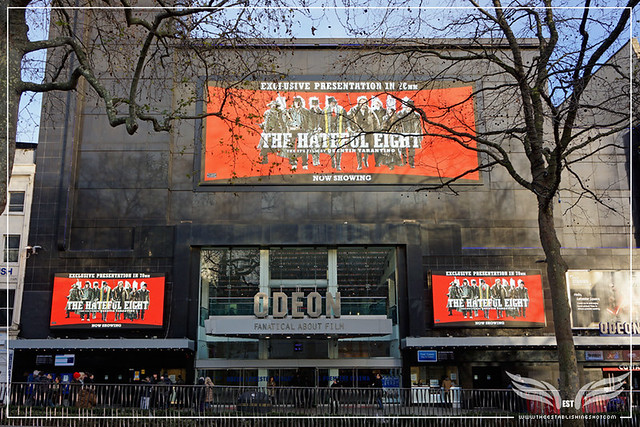
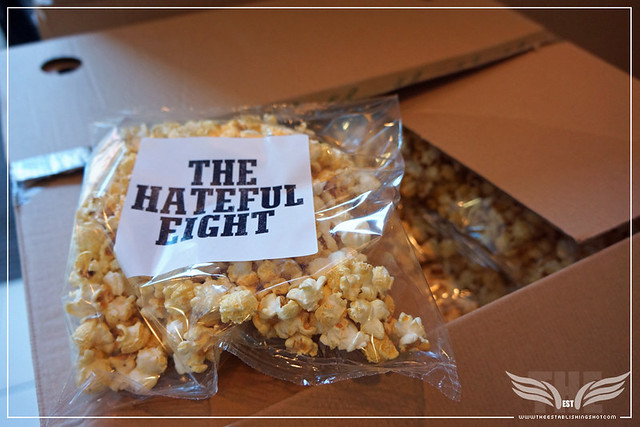


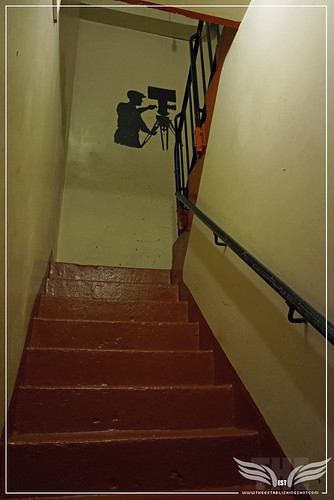

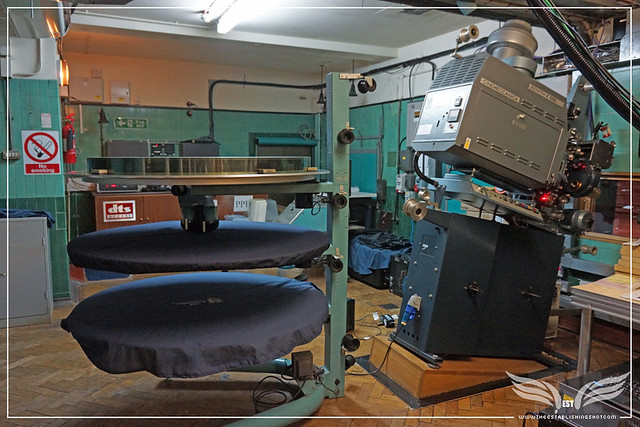


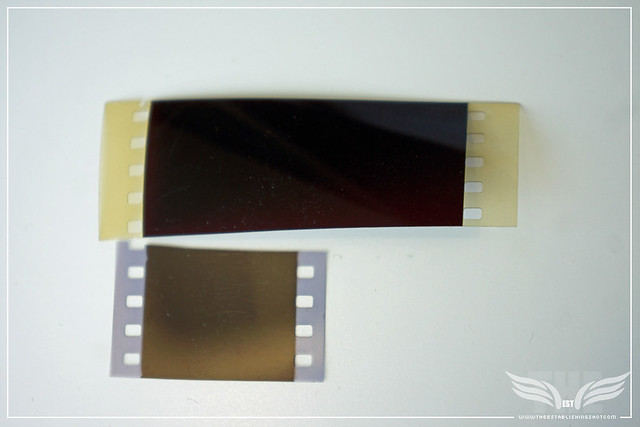

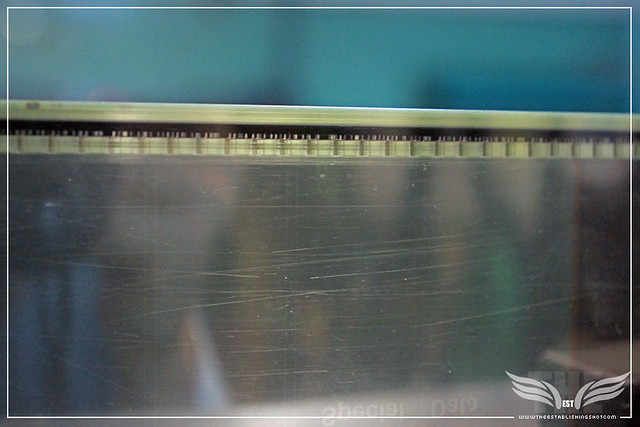
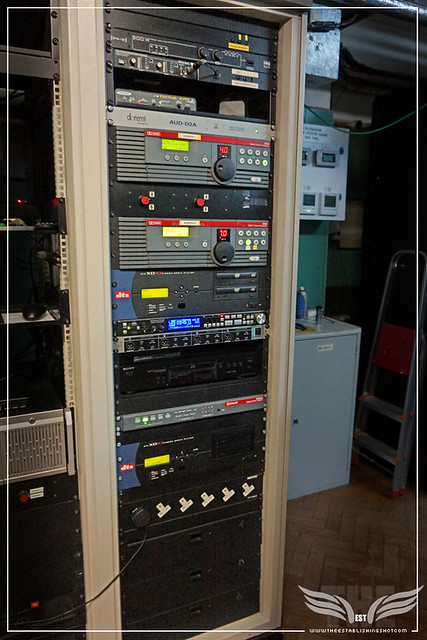
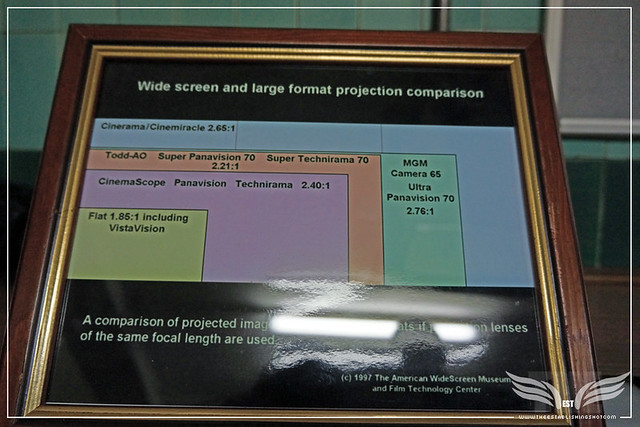
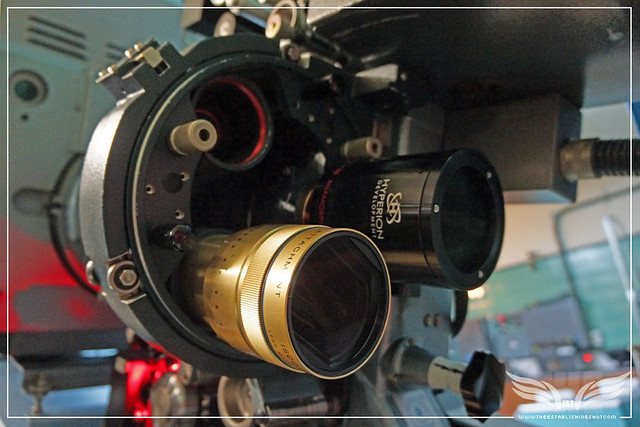

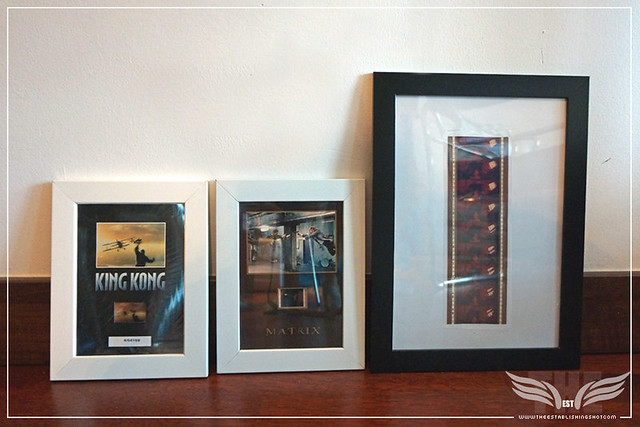


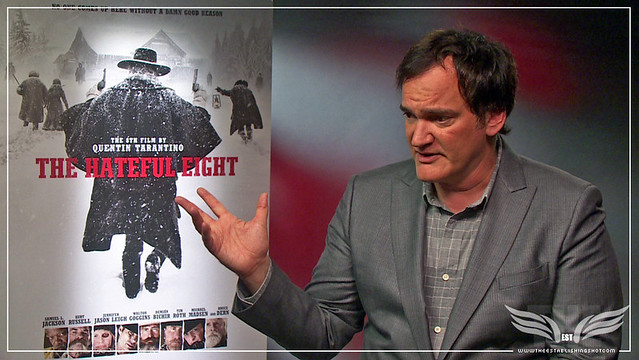
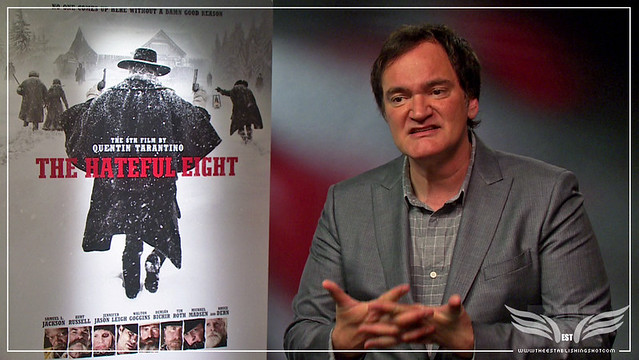
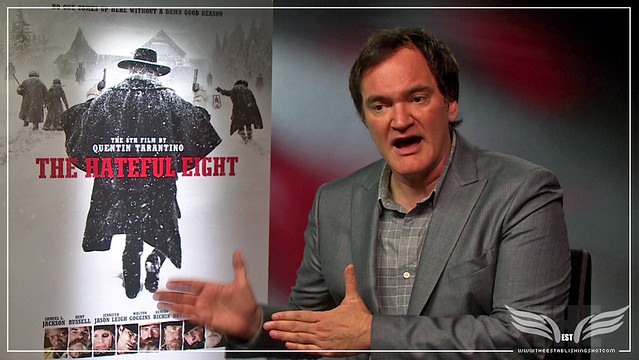

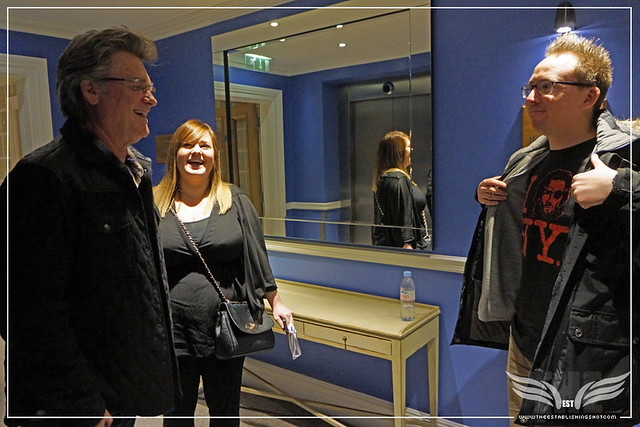
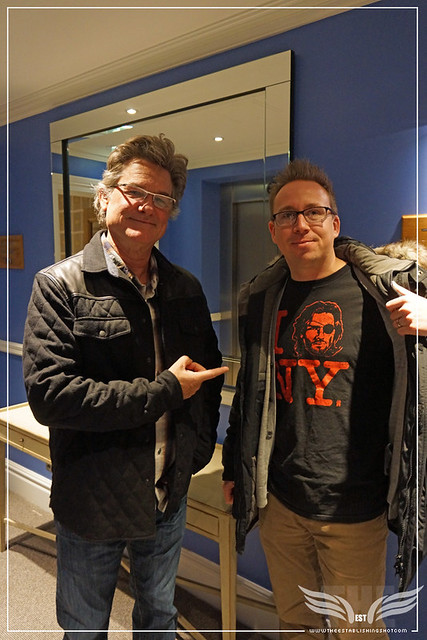











0 comments: